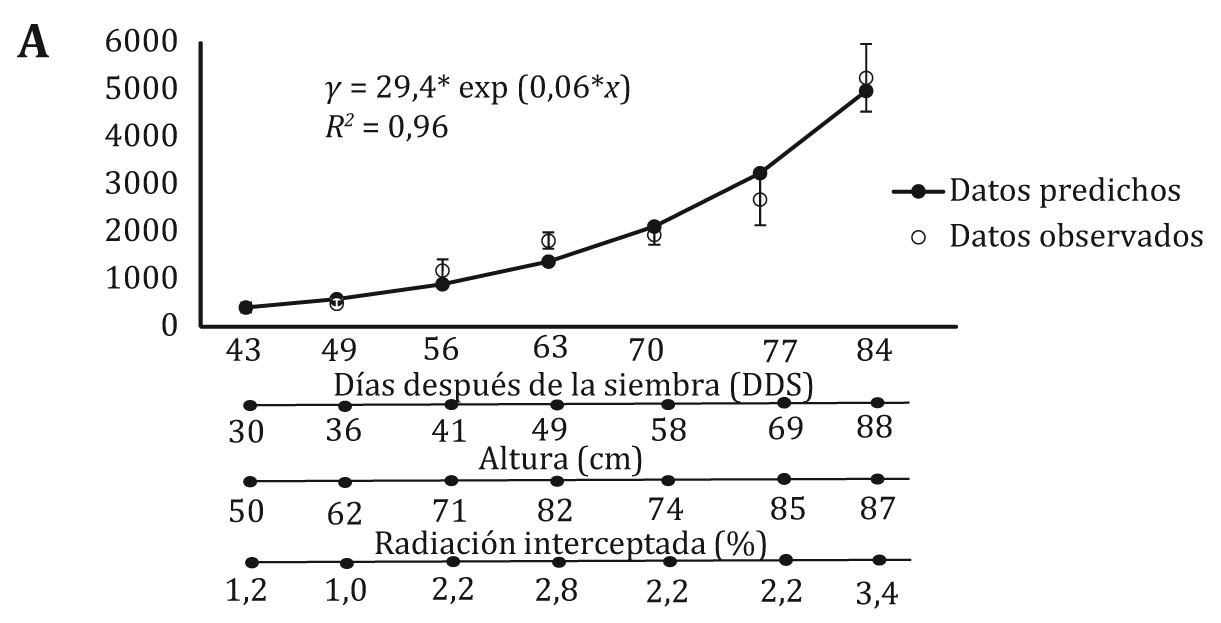Growth analysis of three lines of barley for forage production, in the valley of Mexico
Keywords:
morphological composition, plant height, light interception, phenological stageAbstract
The objectives of the research were to generate forage accumulation curves, and to determine the optimal cutting time for forage for three lines of barley, during two growth cycles. Cuttings started 43 days after sowing (DAS), and until the maximum accumulation of dry matter was reached. Forage accumulation, morphological composition, leaf area index, plant height and light interception were evaluated weekly. Data from the experiments were analyzed using SAS software, using a randomized block design and a split-plot arrangement with three replicates. Intercepted radiation and leaf area can be used to determine the optimal cutting time. The optimal cutting time in the second growth cycle was 70 DAS, with intercepted radiation values of 94, 95, and 91%, leaf area indices of 7, 5, and 3, and heights of 88, 82 and 59 cm for Esp x O'Connor, Esp x CP and Lenetah (p < 0.05), respectively, at the stem elongation stage. The optimum period or optimum phenological stage for cutting of green forage or haying is the stem elongation stage, due to high values of leaves number, light interception and leaf area index recorded in this phenological stage. Since a point of view of total dry matter yield it is recommended to harvest at the beginning of grain dough stage, when the grain yield and dry matter yield are the highest.
Downloads

Downloads
Published
How to Cite
Issue
Section
License
Aquellos autores/as que tengan publicaciones con esta revista, aceptan las Políticas Editoriales.










.jpg)




